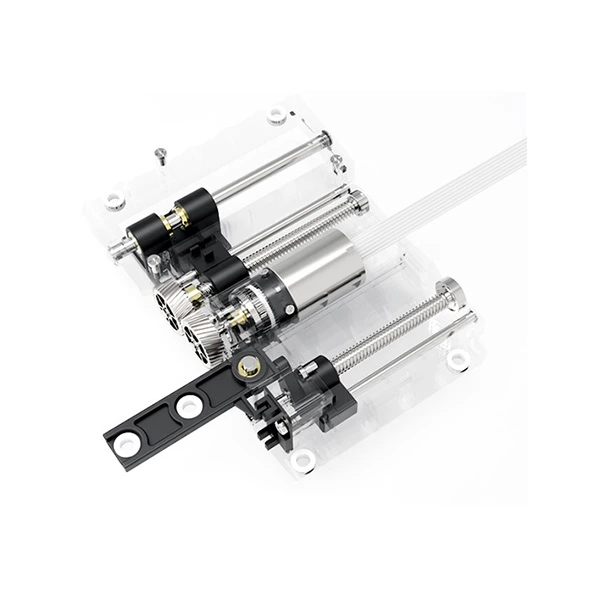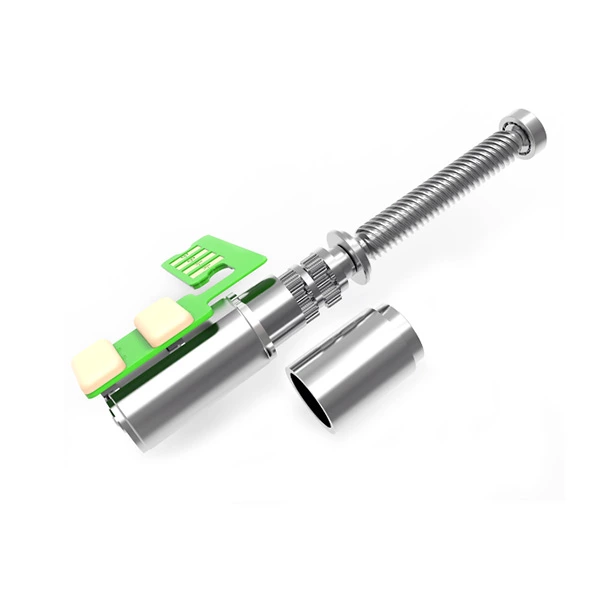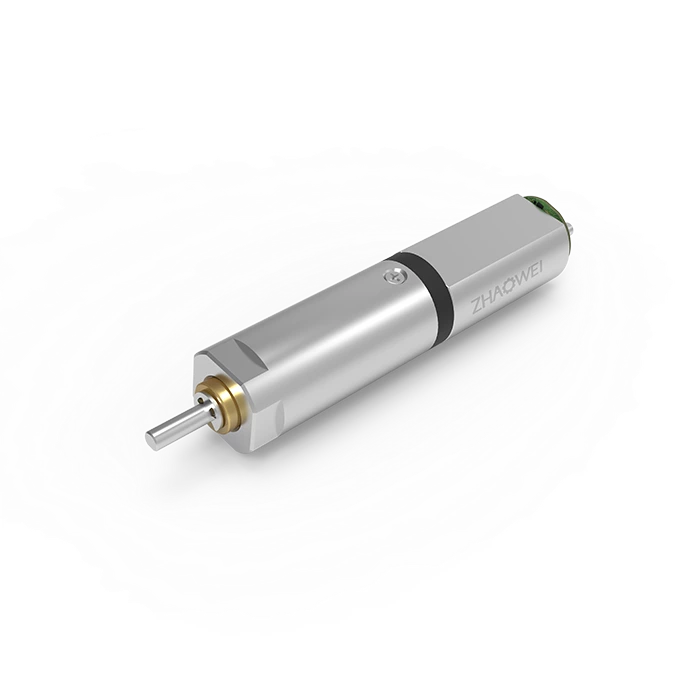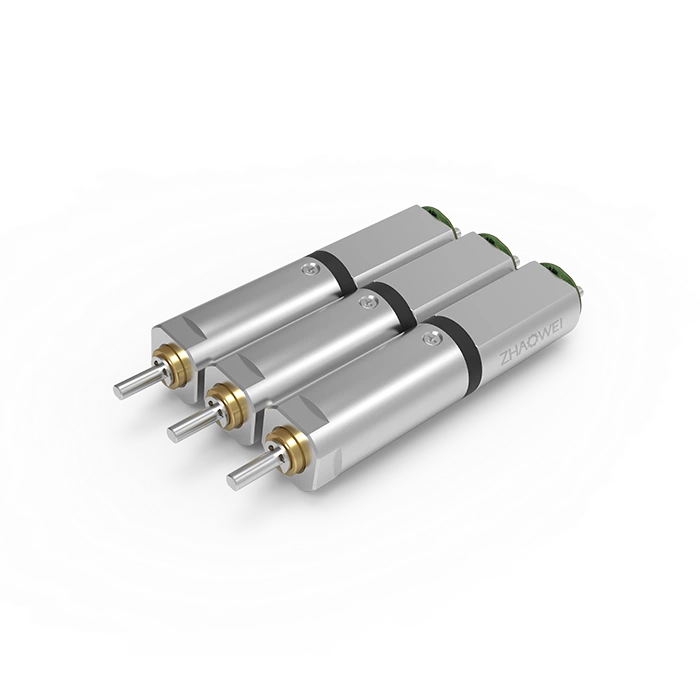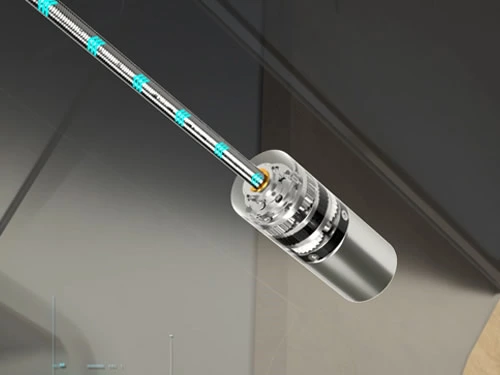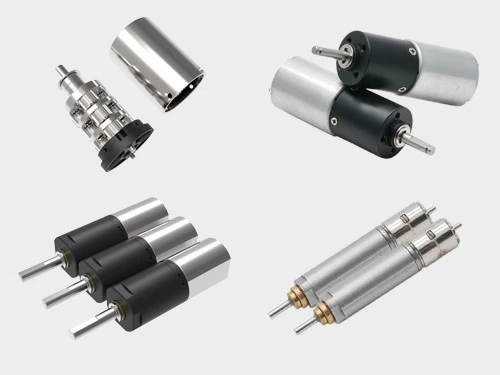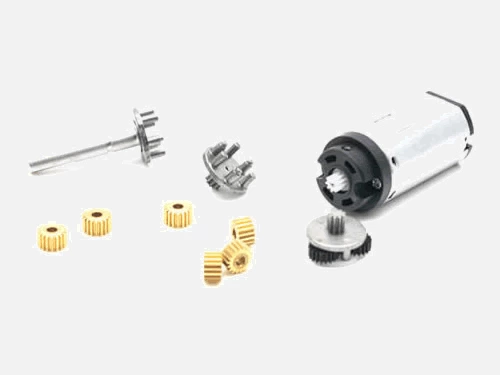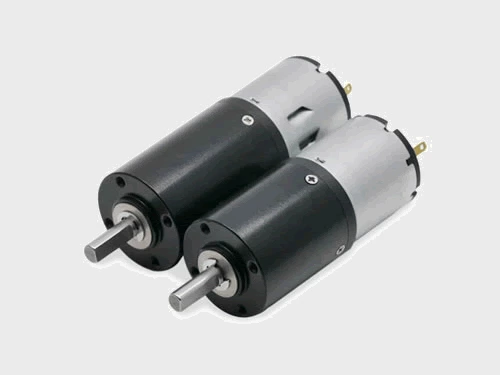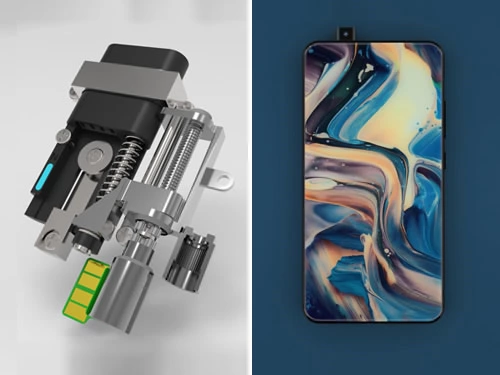General Types of Micro Gear Motor
In modern industrialization, the mutual transformation of electrical energy and mechanical energy has become highly common and necessary. A gear motor is a device that converts electrical energy into mechanical energy. The gear motor comprises motor, gear, and bearings in a housing; it is commonly used in applications that need high force (torque) at low speed. Nowadays, various devices are getting smaller in size. Accordingly, the micro gear motor came into being. A micro gear motor is a gear motor whose diameter is measured in millimeters (small size), and the torque is high owing to the adoption of the gearbox. Micro gear motors can be divided into multiple different types based on different standards. This passage will introduce several commonly used micro gear motors.
1. Micro DC Gear Motor
A micro DC gear motor is a gear motor that takes electrical power through direct current (DC) and converts this energy into mechanical rotation. It comprises a micro DC motor and a set of gears (gearbox). A DC motor is made up of a stator and a rotator; it uses magnetic fields that occur from the electrical currents generated, which powers the movement of a rotor fixed within the output shaft. The output torque and speed depend on both the electrical input and the design of the motor. Micro DC gear motors need a battery power source and are used for precise variable-speed applications like wheelchairs, hospital beds, lifts and medical tables, power seats, and other automotive applications.
2. Miniature Brushless DC Motor
As DC motors are usually divided into two types—brushed DC motor and brushless DC motor (BLDC); miniature brushless DC motor is a common micro DC gear motor, which adopts a brushless DC motor and a set of gears. The BLDC motor is a typical mechatronic product. The brushless motor denotes the motor without brush and commutator (or slip ring), also known as the commutator-less DC motor. A miniature brushless DC gear motor usually uses a permanent magnet as its external rotor. The windings are on the rotor for brush DC gear motors. However, things are different for the brushless motor; the windings are on the stator for brushless motors. In addition, it uses three phases of driving coils and a specialized sensor that tracks the rotor position. After tracking the position change of the rotor, the position sensor commutates the current of the stator winding in a specific sequence (i.e., detecting the position of the rotor pole relative to the stator winding, and generating a position sensing signal at a particular position, processed by the signal conversion circuit to control the power switch circuit). Micro brushless DC gear motors have various applications like automobiles, tools, smart homes, electronic products, industrial robots, smart robots, logistics equipment, medical equipment, industrial control, automation, and aerospace.
3. Micro Planetary Gear Motor
Unlike the previous two types of gear motors categorized by the motor, the micro planetary gear motor is divided by the gearbox adopted by the gear motor. As introduced in the former passage, a gear motor is typically made up of gears, called gearboxes/gearheads, and a motor used to change speed and torque. That is, a micro planetary gear motor indicates a motor with a planetary gearbox/planetary gearhead. Planetary gearheads typically comprise three parts—sun gear, planet gears, and ring gear. The sun gear is usually placed in the center, while planet gears orbit around the sun gear and receives torque. Regarding the ring gear, the outer ring gear (refers to the housing below) meshes with planet gears. Planetary gear motors are often used to decrease speed and increase torque heavily in a limited space.
4. Micro Geared Stepper Motor
Micro geared stepper motor usually denotes a stepper motor with a gearbox or gearheads. While the brushed DC motor keeps rotating if connected to a DC power supply, the geared stepper motor is not the thing; it converts the input pulse into a precisely defined increment in the shaft position. The shaft is moved by each pulse with a fixed angle, that is, every pulse inputs, the rotator moves a step or rotates at a fixed angle. The rotating speed is proportional to the pulse frequency. Thus, you can control the rotating speed by changing the input pulse frequency, realizing precise positioning. Adding a gearbox to a stepper motor system can enhance motor performance by decreasing the inertia ratio of the load to the motor, increasing the load torque, and reducing motor oscillation.
As the micro gear motor is gaining broader applications, more customization of parameters should be made, like torque, diameter, voltage, and speed. ZHAOWEI, as a microdrive system manufacturer, provides a set of custom transmission systems to fulfill your specific needs.







